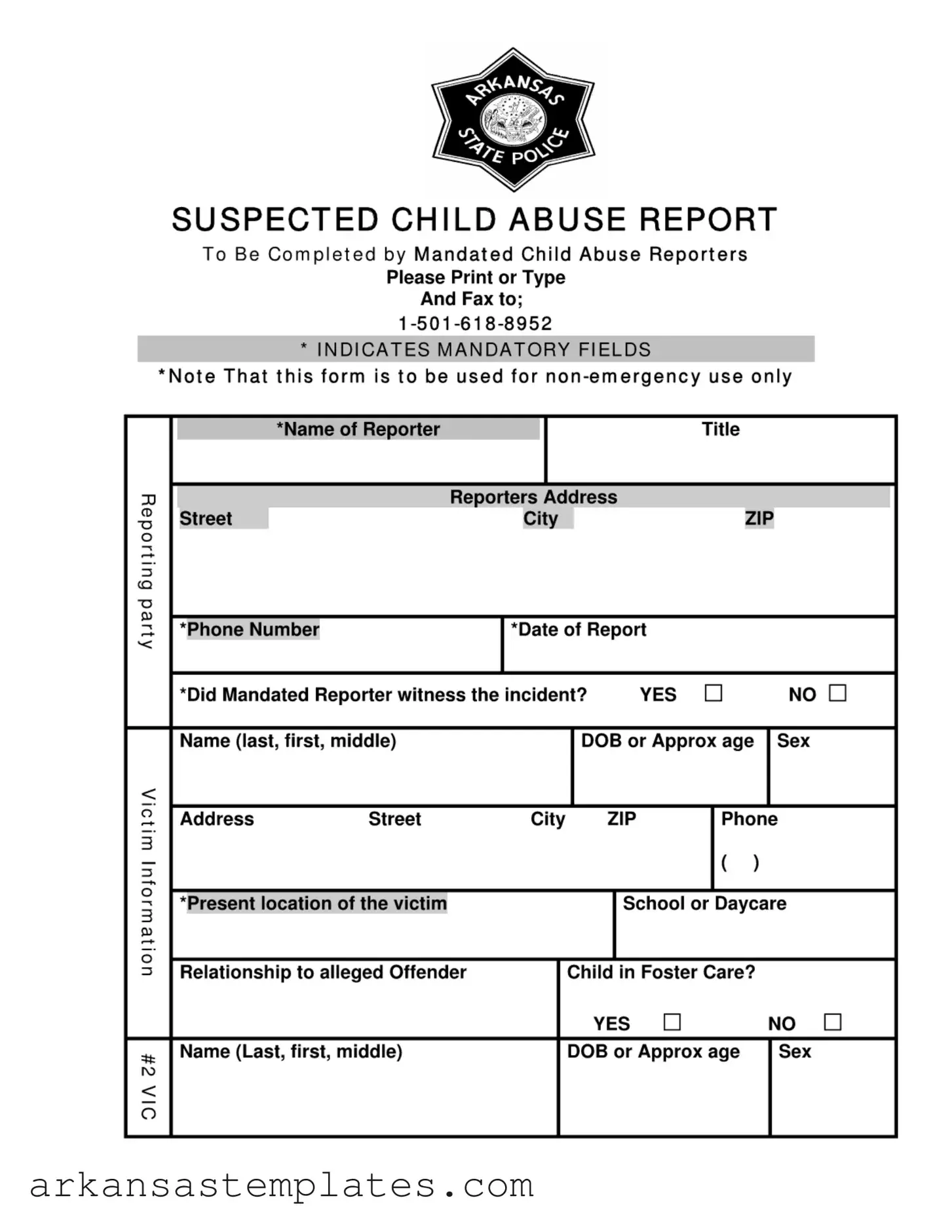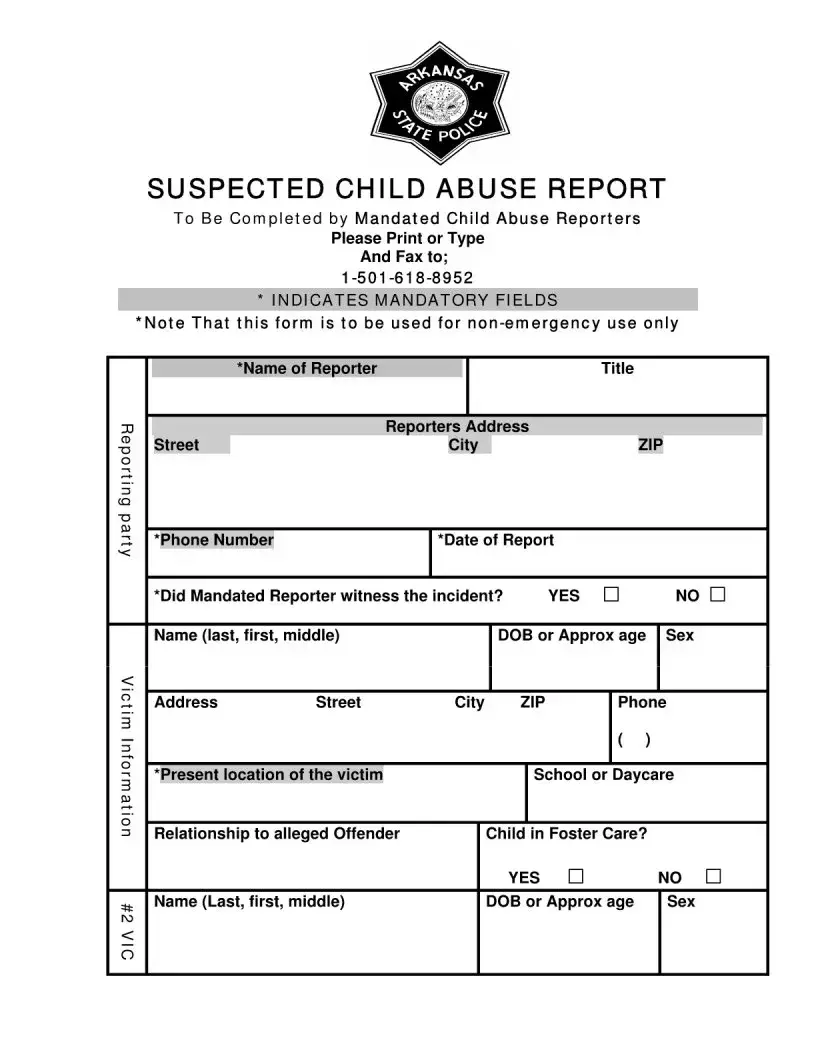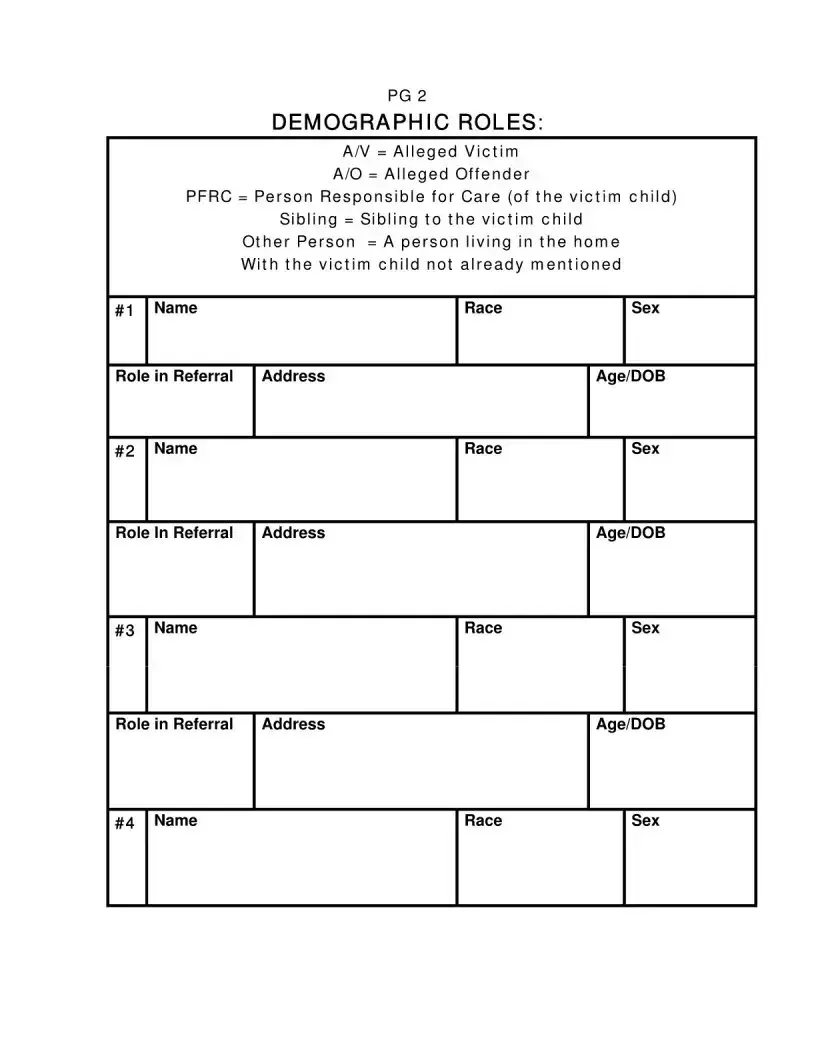Filling out the Arkansas Child Abuse form requires careful attention to detail. One common mistake is not providing all mandatory fields. Each section marked with an asterisk must be completed. Omitting this information can delay the process of getting help for the child.
Another frequent error is failing to clearly indicate whether the mandated reporter witnessed the incident. This simple yes or no question is crucial for assessing the situation. If this section is left blank, it may lead to confusion about the report's validity.
People sometimes forget to include their contact information. The reporter's name, phone number, and address are essential for follow-up. Without this information, authorities may struggle to reach out for further details.
Many individuals also overlook the importance of accurately recording the victim's information. Providing the correct name, age, and relationship to the alleged offender is vital. Incorrect details can hinder the investigation and support for the child.
When describing the incident, some reporters fail to include all necessary details. The narrative should clearly outline what happened, who was involved, and any visible injuries. A vague description can lead to misunderstandings and inadequate responses.
Another mistake is not specifying the date and time of the incident. This information helps investigators establish a timeline. If the date or time is missing, it may complicate the investigation process.
People sometimes neglect to mention the child's current location. It is crucial to provide this detail to ensure the child's safety. If the location is unknown, authorities may have difficulty reaching the child in need.
Additionally, reporters may forget to include information about any drug use. If drugs are involved, it can significantly impact the child's safety and well-being. This information should be clearly stated in the report.
Another common oversight is not indicating if the child is in foster care. This detail is important for understanding the child's living situation. Failing to mention it can lead to gaps in the investigation.
Lastly, some individuals do not take the time to review their completed form before submission. Errors can easily be overlooked. A final check can help ensure that all information is accurate and complete, allowing for a more effective response.



